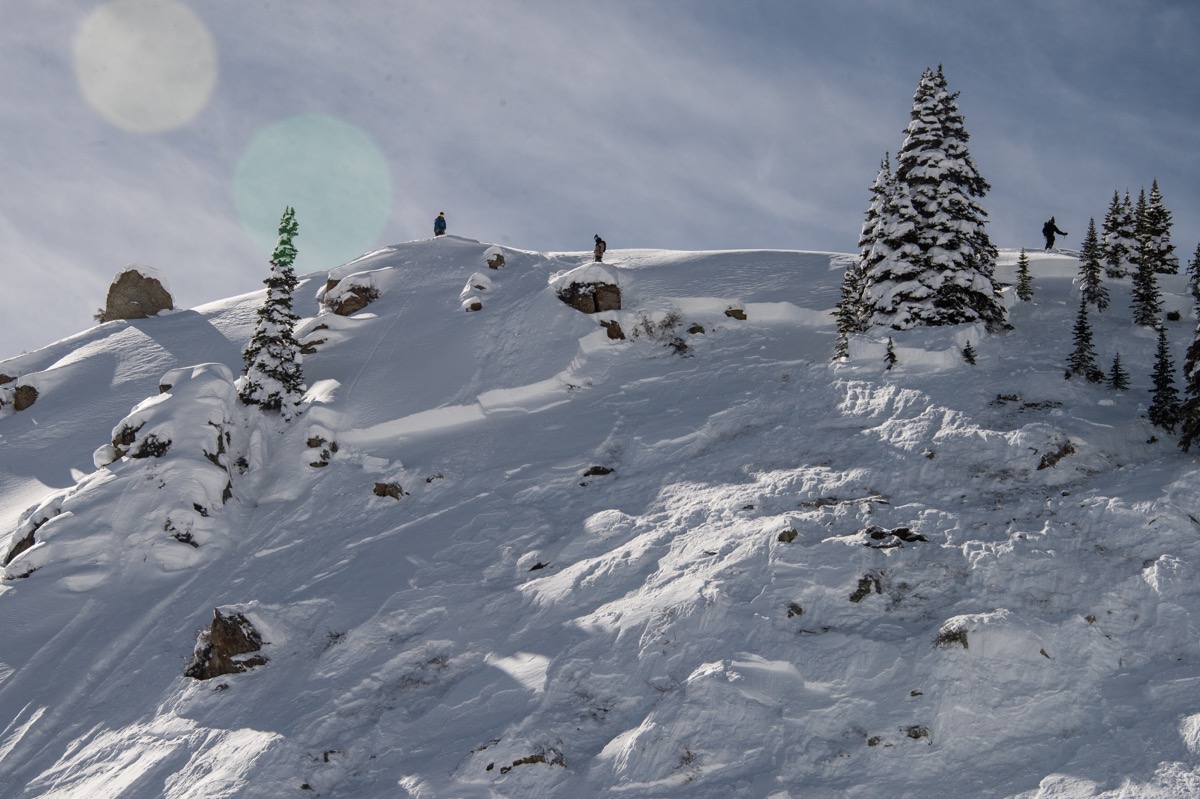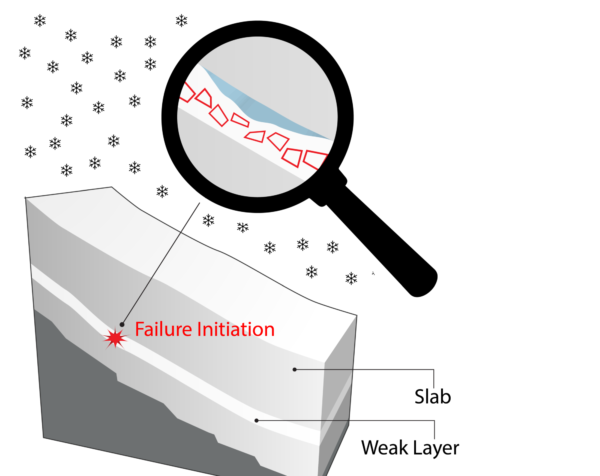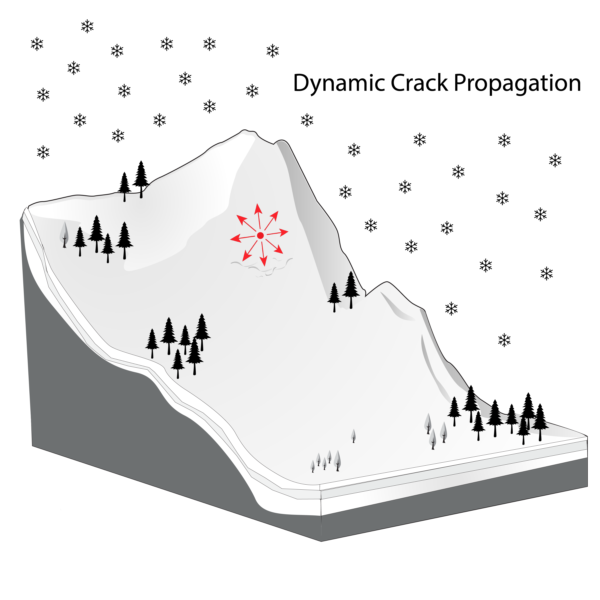Slab avalanches release due to a sequence of fracture mechanical processes.
- Failure initiation: For a natural avalanche, typically triggered by the relatively slow addition of load from new or windblown snow, a damage process in the weak layer leads to the formation of an initial crack and the growth of that crack to a so-called critical size.
- Crack propagation: Once the crack reaches the critical size, thought to be on the order of decimeters (around a foot), the onset of crack propagation begins. For an avalanche triggered by a person or an explosive, the skier or explosive can create a critical crack, bypassing the first step of failure initiation.
- Dynamic crack propagation: This is the process of the crack rapidly propagating across the slope (or from flatter terrain into steeper terrain above), and occurs at a scale from 10 meters (~33 feet) up to several hundred meters (several hundred yards) or more.
- Tensile failure and sliding of the slab: Once the slab is detached from the weak layer due to dynamic crack propagation, it may begin moving downhill, causing failure at the boundaries of the slab (the crown, flanks, and stauchwall). Now fully detached, an avalanche will occur as long as the slope is steep enough to overcome the friction between the slab and the bedsurface.




